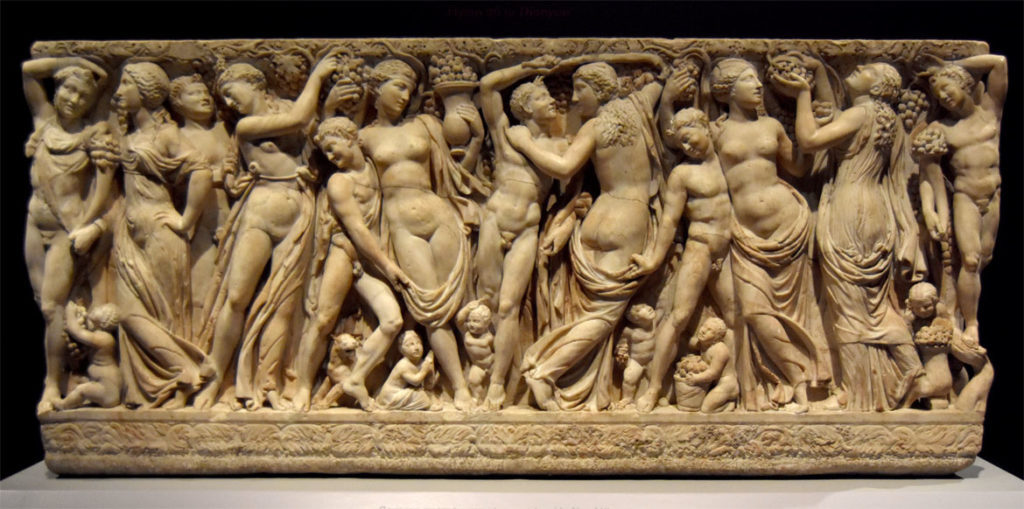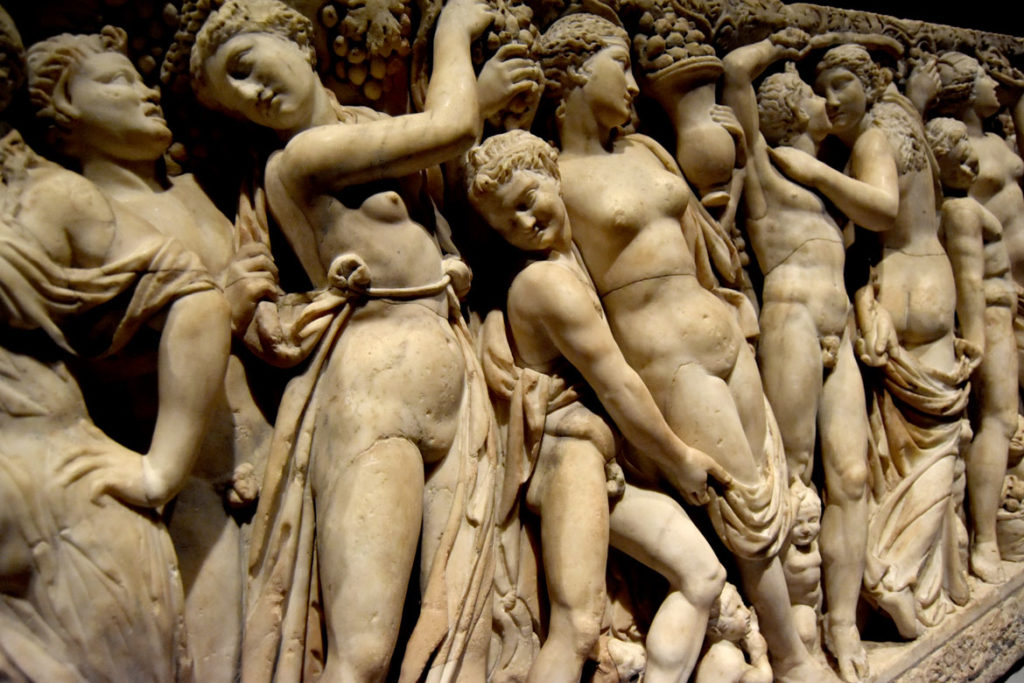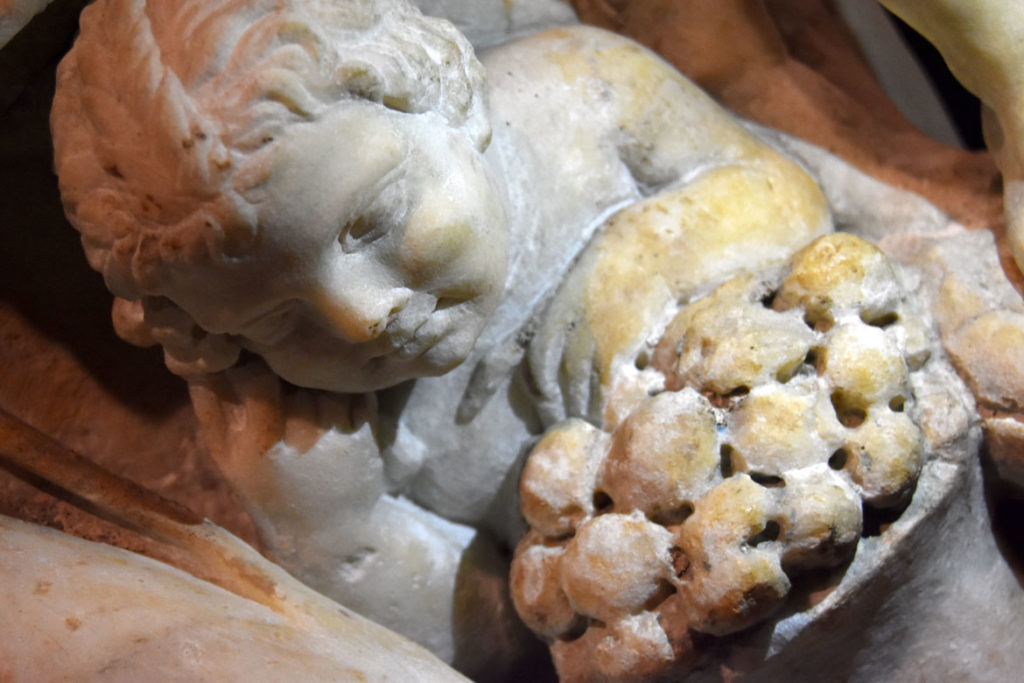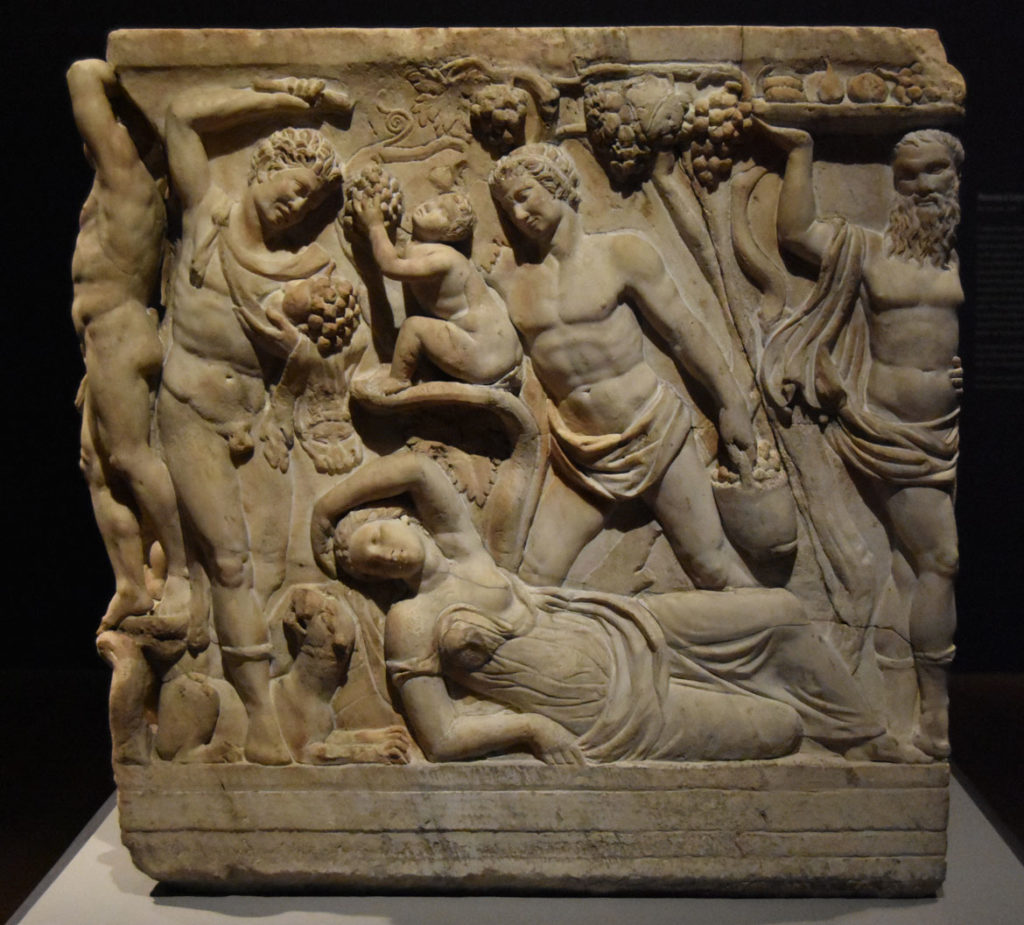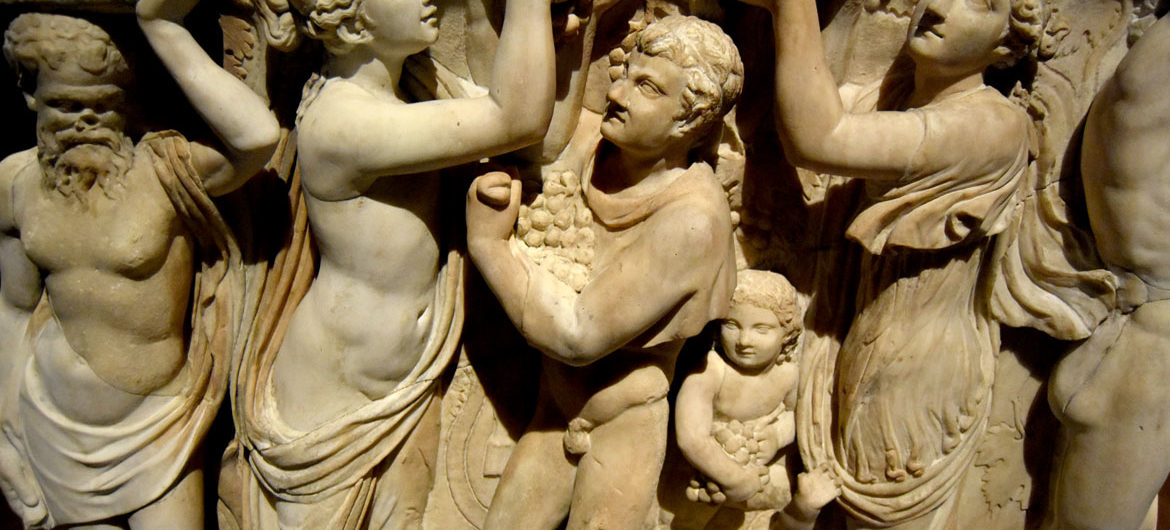The story goes that the two-millennia-old Farnese Sarcophagus was so heavy that in 1901 Isabella Stewart Gardner had the marble coffin hauled in and built her museum around it. For a century, it has anchored the back left side of her museum’s dramatic central courtyard.
“It would have been put in place at the time the museum was being built and it was never moved,” says Holly Salmon, the Gardner Museum’s senior objects conservator.
That is never moved until museum staff decided to pull it out for the exhibit “Life, Death & Revelry,” on view at the Boston museum through Monday, Sept 3. The museum says, “For the first time in over 100 years, we have moved this monumental work from its usual location, wedged between two columns in the Palace courtyard, into Hostetter Gallery, so that all four sides of it are now visible.”
Freshly cleaned and accompanied by new scholarship, the exhibit offers insights into the origins of the piece that the museum has long touted it as “the most important work of ancient art in the collection.”
The Gardner Museum began new analysis of the sarcophagus two years ago. “We were looking at what it was made out of, what it looked like originally, and how it changed over time,” Salmon says. They moved the artwork onto a platform in the courtyard last year for continuing study and seven months of cleaning. At around 7,500 pounds, Salmon says, “It was too heavy to go anywhere else really.”
Using steam, gel, lasers and water, conservators painstakingly cleaned water damage, grime from pollution (“post Industrial Revolution carbon in the air,” Solmon says), dust, bugs.
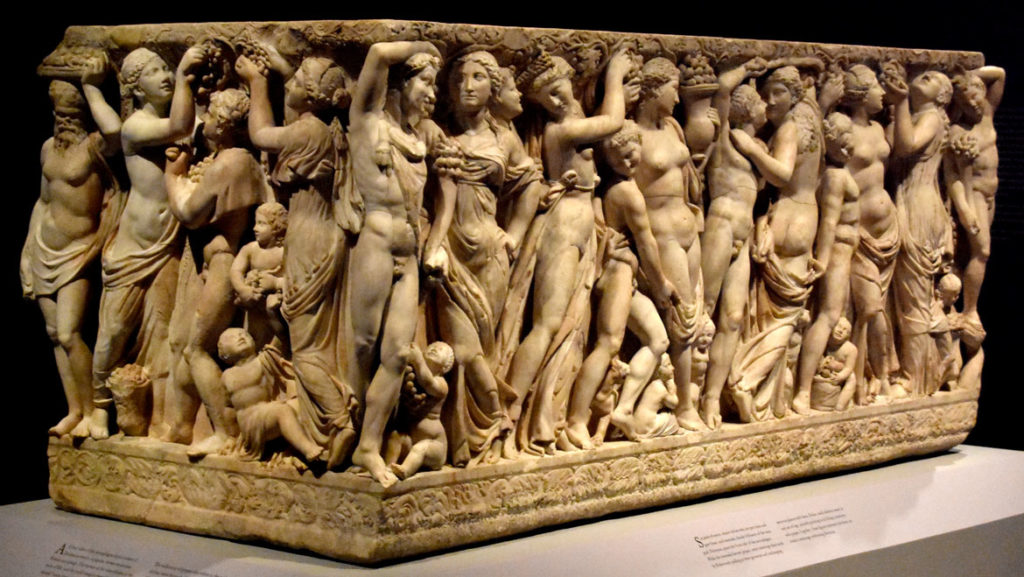
Help Wonderland keep producing our great coverage of local arts, cultures and activisms (and our great festivals) by contributing to Wonderland on Patreon. And sign up for our free, weekly newsletter so that you don’t miss any of our reporting.
The sarcophagus is carved with “images of human beings interacting with the god Dionysus … connected to the divine and joyful and kind of liberated,” says Christina Nielson, curator of the Gardner collection (or chief curator).
Dionysus was the ancient Greek god of wine and fertility and rebirth (as grape vines wither each winter only to bloom anew in the spring). Carved in high, three-dimensional relief across the front of the sarcophagus, female worshipers of Dionysus, known as maenads, harvest grapes while lusty male satyrs strip them out of their clothes. Putti—small children—play at their feet and fill containers with grapes.
“Women like this only had license to do this because they are celebrating the god. Proper Roman women were veiled and they didn’t leave their homes,” Nielson says. “To be naked and frolicking is an extraordinary state.”
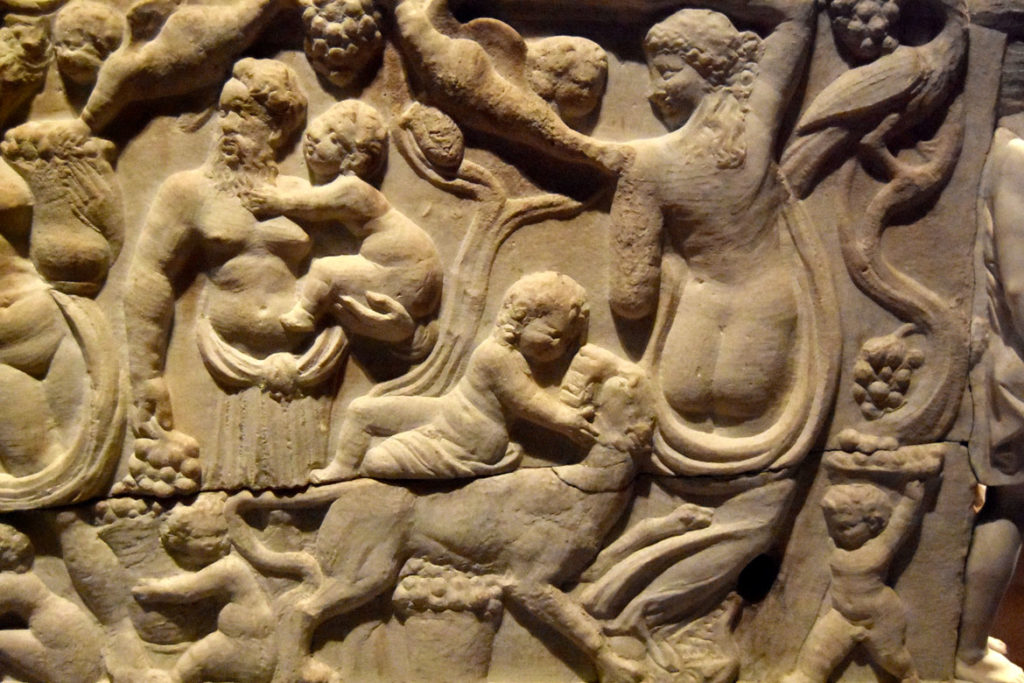
Carvings across the back depict scenes from Dionysus’s childhood—the satyr Silenus, who raised the god, holds the baby Dionysus, while another young Dionysus rides atop a panther.
“It was about putrefaction, the decay of the body on the inside, but the transformation of grapes into wine on the outside,” Nielson says. “Life and death and renewal and fertility and wine.”
Based on new observation, scientific analysis, and historical scholarship, museum staff now believe the block of marble was quarried at Docimium, in what is now western Turkey, during the third century. It was probably carved into a sarcophagus and vividly painted at Rome.
Only a few traces of the original coloring remain—gilt gold on a man’s hair, blue on grapes and a woman’s dress, red in a woman’s cloak—hidden in crevices and out of the way places where it survived centuries of exposure to the elements.
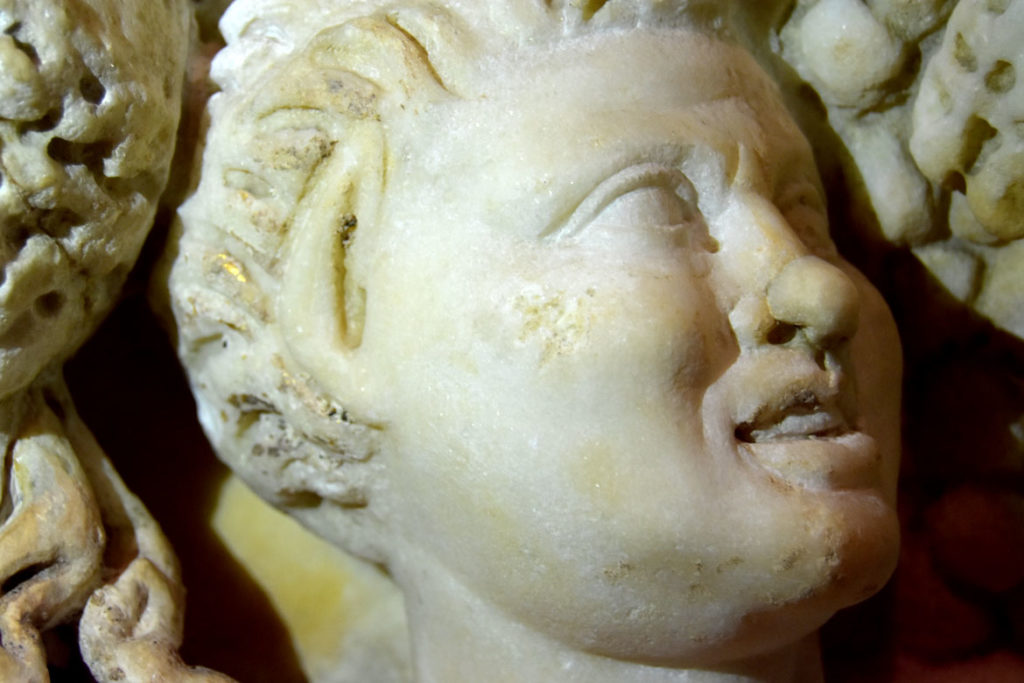
“It was originally painted and gilt and given what has happened to it over the course of its life it’s extraordinary there’s any pigment left,” Solman says. “While we can’t say what it looked like because there are only a few flecks left here and there … one of the most exciting things is we were able to identify the pigment Egyptian blue, which is thought to be the first man-made pigment.”
Gardner staff believe the sarcophagus was then probably buried in a tomb at Tivoli, a hillside town outside Rome where the Emperor Hadrian kept a country home. “We don’t know who was buried in it,” Nielson says. “It was probably set in the earth, but it could have been in these tunnel-like” necropolises.

The sarcophagus was rediscovered in 1530. “By the 16th century, people in the city of Rome are interested in antiquities, so archaeology as we know it starts,” Nielson says.
Cardinal Alessandro Farnese, the governor of Tivoli and grandson of Pope Paul III, had the sarcophagus moved to Rome where it became part of his family’s collection. From that point, the sarcophagus’s journey can be traced via archival records and drawings that it attracted.
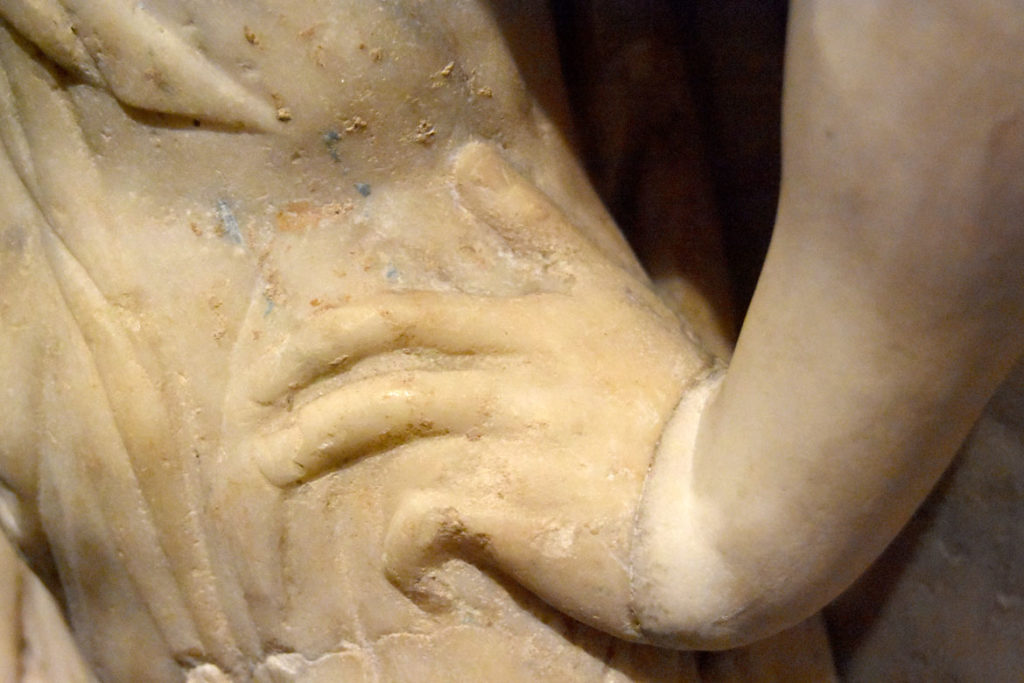
The Farneses placed the sarcophagus outdoors in the gardens of their palazzo. A hole was carved at the back right to serve as a drain. Artists were inspired to draw it. Sketches from the 1600s, reveal a child figure that is now missing from the left end panel.
“When we looked at the 17th century drawings, we realized there as a putti figure that’s not there now,” Solmon says. The leg of a nearby adult figure was recarved at some point and the child lost in the process. “There are a few of his tiny fingers left on the fruit basket, clinging on for dear life.”
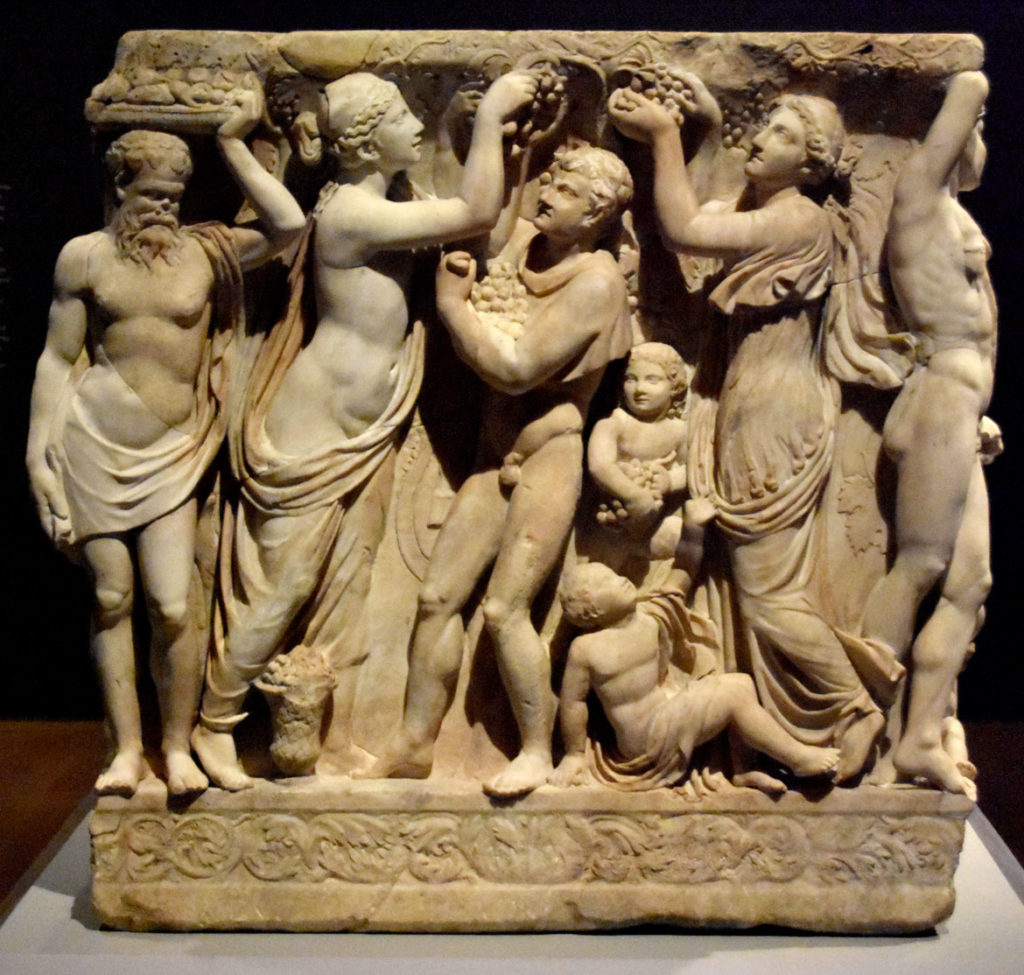
That was likely the doing of sculptor Carlo Albacini and his workshop. He added new marble and recarved some of the original stone as part of an 1802 touch-up. “What we spent a lot of time doing is looking at the restoration,” Solmon says.
Lines and cracks along the joints indicate where Albacini added new marble to replace arms and legs. “Noses and limbs, things that protrude were more vulnerable,” says Jess Chloros, an associate objects conservator at the Gardner.
Salmon says Albacini seems to have recarved some of the ancient marble where it “eroded along the bottom … in the tomb or outdoor exposure in the garden.” This is particularly visible along the right side and back, where it “probably suffered quite a lot from exposure and erosion,” she says.
“A lot of pitting,” Chloros says.
“It was easier to carve it back to get a fresh start,” Salmon says.
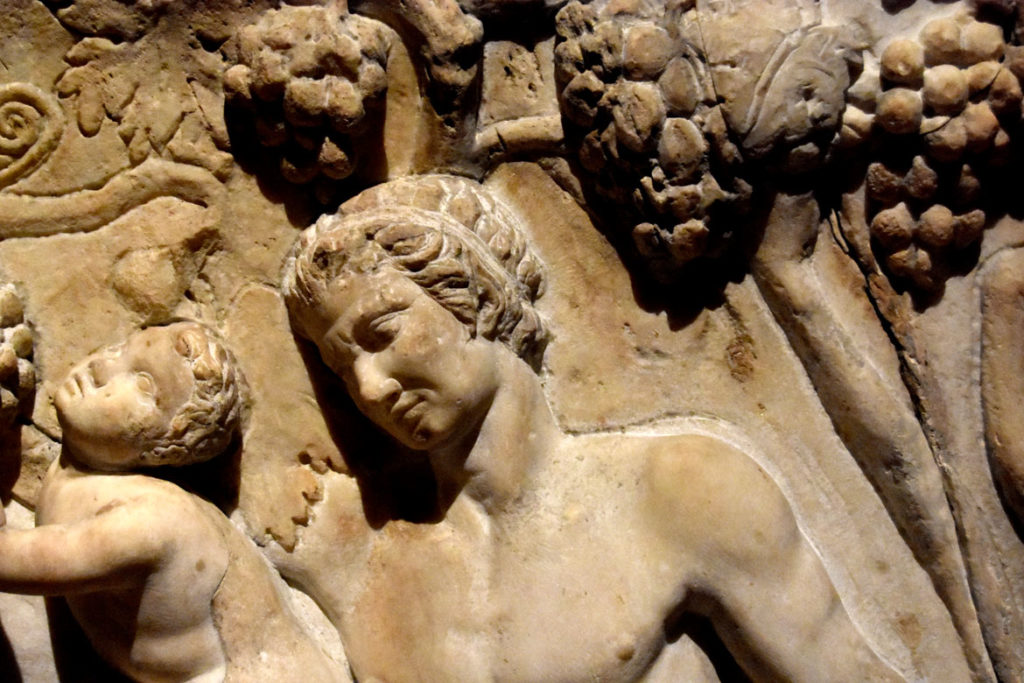
Albacini’s recarving is visible in chisel lines around the shoulder of one male figure, where the sculpture worked into the original marble. “It was likely so damaged that they kept carving it back until they got to intact stone,” Chloros says.
Because the sarcophagus was in Albacini’s studio, it escaped confiscation by French emperor Napoleon Bonaparte’s forces. Instead, it was stored at the Vatican around 1810 and sent back to the villa after Napoleon’s fall from power in 1815.

At the urging of Richard Norton, an American art dealer and advisor to Gardner, Gardner bought the sarcophagus in 1898. She had it shipped via Cunard Line steamboat from Liverpool to Boston in 1900 and prominently placed in the courtyard the following year as she constructed her museum.
For this exhibit, Chloros explains, the sarcophagus was “too heavy to move through the museum. The safest way was for it to go out the front door.”
This spring, riggers carefully rolled the sarcophagus out of the building atop round poles set on a track of wooden beams, then fork-lifted it onto a truck and drove it around to the gallery in the 2012 Renzo Piano-designed wing.
As Richard Norton wrote to Gardner in 1897: “For a sarcophagus, it is unusually fine. Naturally the work is not as refined as the work on the Parthenon frieze, but this slightly hasty character of the work is characteristic of sarcophagi. It is really very lovely and I do not think even Boston would object to its frank but slight sensuality.”
Help Wonderland keep producing our great coverage of local arts, cultures and activisms (and our great festivals) by contributing to Wonderland on Patreon. And sign up for our free, weekly newsletter so that you don’t miss any of our reporting.
